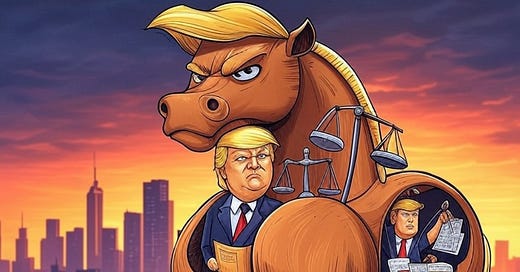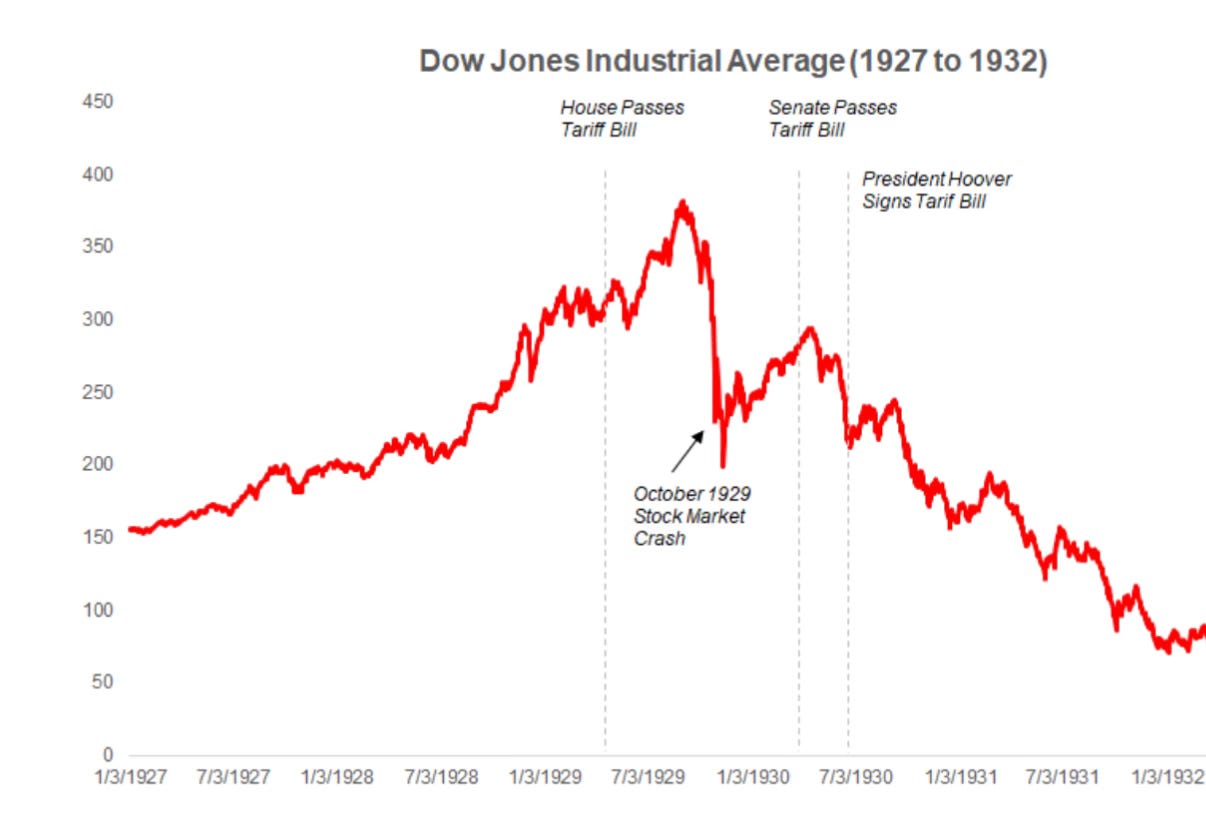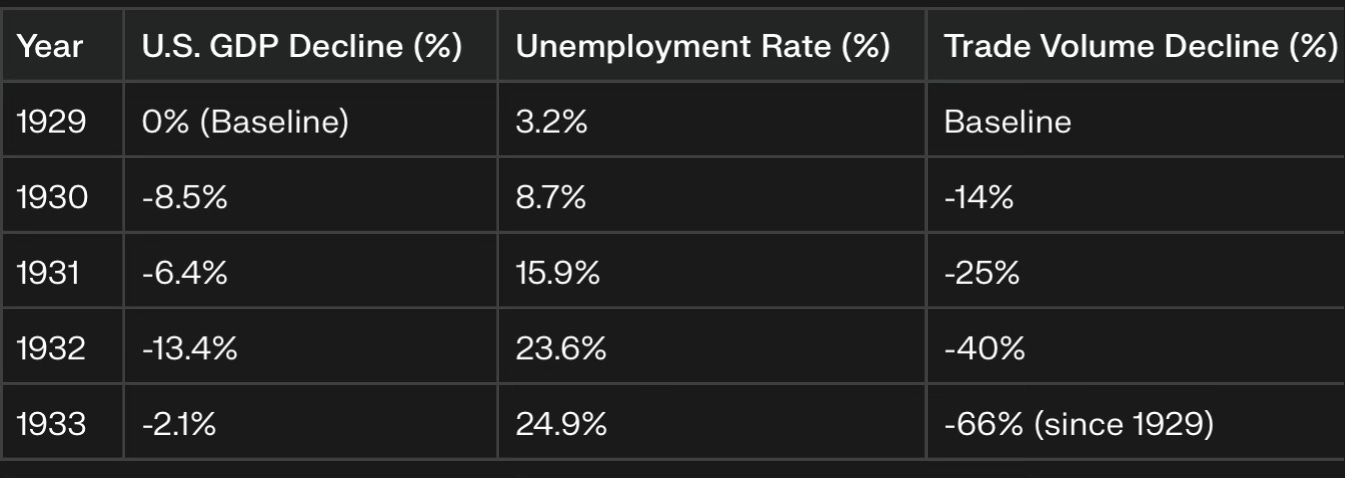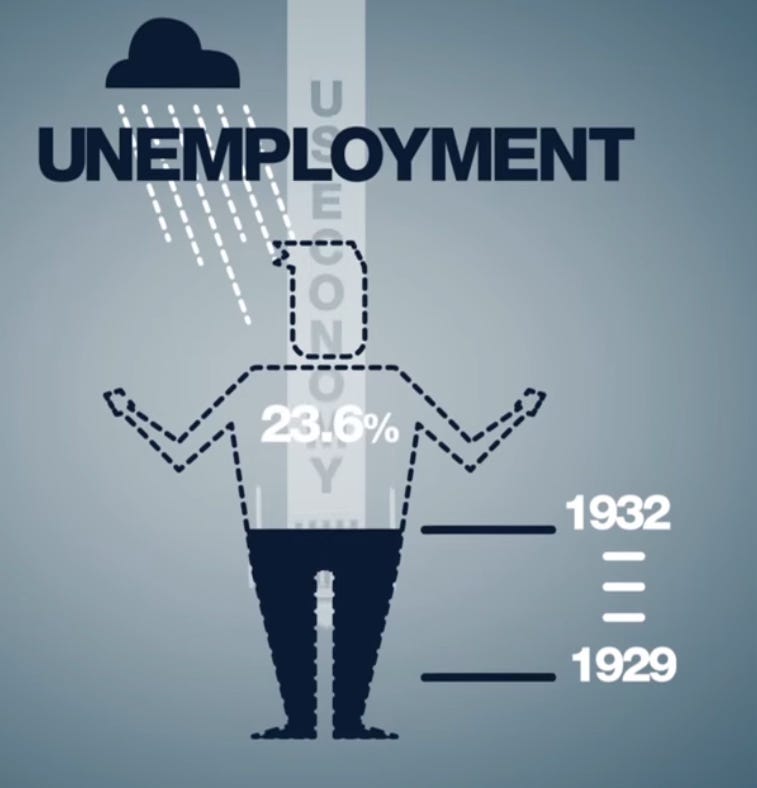In the epic tale of Troy, the Greeks laid siege to the city for a decade, unable to break through its mighty walls. Their solution? A magnificent wooden horse, seemingly a gift to the Trojans, a symbol of peace and divine favor. But inside, hidden warriors lurked, waiting to unleash chaos once the gates of Troy were opened. Despite warnings, the Trojans wheeled the horse inside, unknowingly sealing their own fate.
At first glance, tariffs may seem like a powerful and simple economic answer—promising to bring wealth, protect jobs, and restore domestic industry, just as President Trump promises. The idea that imposing tariffs will generate revenue, boost American production, and punish foreign competitors is as alluring as the wooden horse presented to Troy. It feels like a win—until the consequences unfold. As with the Trojan Horse, what appears to be a gift soon reveals itself as a disaster. Trade wars do not lead to economic prosperity; they lead to contraction, and global retaliation. And just as the Trojans watched their city burn from within, history shows us that economies caught in the trap of protectionism are doomed to suffer severe downturns.
The Smoot-Hawley Catastrophe: A Trojan Horse of the Great Depression
In 1929, the U.S. economy stood on the precipice of disaster. But contrary to popular belief, it wasn’t merely speculative excess that triggered the Great Depression—it was also the momentum of protectionism. The Smoot-Hawley Tariff Act, passed by the House in May 1929 and signed into law by President Herbert Hoover in June 1930, aimed to protect American farmers and manufacturers by imposing high tariffs on foreign goods. Instead, it unleashed an economic war, with nations retaliating in kind, strangling global trade.
The stock market, already reeling from the initial October 1929 crash, responded with further declines as investors recognized the growing risks of a collapsing global economy. Between the market’s 1929 peak and the signing of Smoot-Hawley in mid-1930, the Dow Jones Industrial Average had already plummeted 50%. But the worst was yet to come—after the tariffs went into full effect, the market crashed another 50%, deepening the economic freefall. What had been advertised as a safeguard for American industry turned out to be a Trojan Horse, unleashing an unstoppable cycle of economic contraction, job losses, and financial despair.
From 1929 to 1933, the U.S. GDP shrank dramatically:
1930: -8.5%
1931: -6%
1932: -13%
1933: -2%
Unemployment skyrocketed from 3.2% in 1929 to a staggering 24% in 1933,
while international trade volumes collapsed by 66%. Global trade declined by 14% in 1930, then another 25% in 1931, followed by a 40% decline in 1932. By 1933, the cumulative drop in trade exceeded two-thirds of its 1929 levels. The result? A prolonged economic downturn that turned a recession into the Great Depression.
Like the Trojans who celebrated their perceived victory with the horse inside their walls, policymakers believed these tariffs would strengthen the economy—but instead, they ushered in financial ruin.
Understanding Supply and Demand: Why Reducing Trade Leads to Economic Collapse
Trade is the foundation of a thriving economy because it allows countries to specialize in what they do best, leading to greater efficiency, lower prices, and higher overall production. When trade is restricted through tariffs, a chain reaction of negative economic consequences unfolds:
To get a better understanding on how this will affect assets and how to position your portfolio make sure to check our latest Portfolio Strategy “Moneyball” CLICK HERE
Keep reading with a 7-day free trial
Subscribe to The Coastal Journal to keep reading this post and get 7 days of free access to the full post archives.







